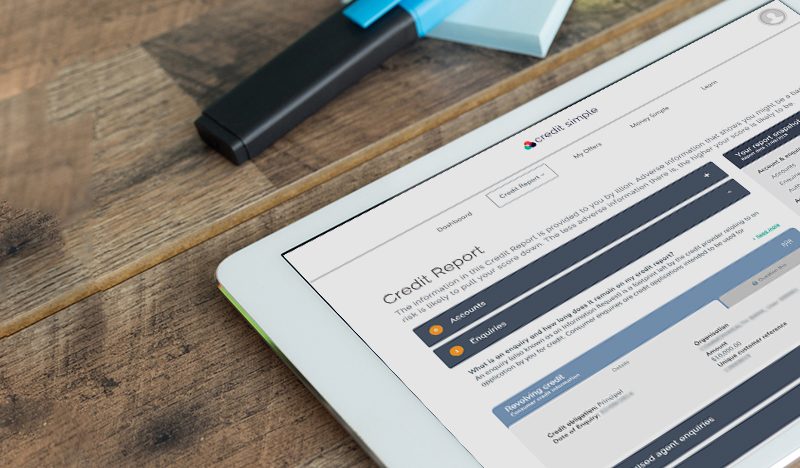The Credit Simple guide to understanding your score
So you got your credit score, but you can’t understand why you got the score you did. Maybe it’s quite high (yay!) or maybe it’s low (or even zero). Here’s a rule of thumb guide to understanding your credit score. Two big things to keep in mind are:
- Credit scores of 1,000 are really rare, and anything over 800 is pretty standout.
- If your score isn’t as high as you think it should be, this could be because your current credit provider isn’t yet actively participating in comprehensive credit reporting – so they aren’t supplying their payment data to credit reporting agencies. This is changing, so your score will change as more info becomes available.
Zero score
If you got a score of zero, sad face emoji. Read more about zero scores and what to do here. If you’ve got a zero, you’ve got something bad on your file, such as a payment default, and potentially more than one naughty thing. You might have a court judgement, summons or bankruptcy. But you don’t need something that drastic to push your score down – even late payments look really bad to companies you want to get credit from. You’ve probably also got a few credit enquiries on your file; this looks bad to credit providers too. So make sure you check out your full credit history and ensure what’s on there is correct. Pay back your debts, or at least put a plan together with the credit provider or collection agency handling it to pay it back.
You do also need to adjust your need for credit and spend the next few years building up a good history of not requiring credit. Potentially put some time into establishing a budget, use a prepay mobile, and try to save for items rather than using credit. If you do have credit facilities make sure you pay these on time. As you build up some good credit history your score will change to reflect this. Unfortunately there’s no magic bullet and you will need to work at this over the next two years or more.
So you got a low score: 1 – 299
If you’re here you’ve probably got payment defaults or other bad data on your file, but you’re saved from having a zero score by also having some positive account payment information (when you do pay your bills on time). If you don’t have defaults or other bad data such as a bankruptcy, then you’ve probably got poor payment history (such as paying late). You could also have a high number of credit enquiries, especially recent ones and for small amounts.
Room to improve: 300 – 499
If your score is between 300 and 499, you’re slightly below average, but you probably won’t have anything really negative (defaults, behind in your payments, judgements, summons, court writs) on your file. It could be that you are in the younger age bracket which is slightly more risky, and your may have recently applied for one or more smaller credit facilities or to credit providers that offer services higher risk customers. Just 3% of people are in this section.
Average: 500 – 699
A healthy 23% of Aussies are in this band. Smaller things will push the score up, such as your age or having a mortgage. There’s probably not much information available about your credit history, which on a positive means there’s nothing significantly negative. It could also mean that your good history with your current credit provider is not yet being reported (credit reporting bureaus don’t yet have all the information from all of the credit providers).
Great: 700-799
Most people in Australia fall into this category (41% of Aussies). If this is you, you’re probably paying your bills on time, but you might have a number of credit enquiries or applications for loans against your name. And you might also be new to credit.
Wohoo! More than 800
You’re basically magical, and if you scored 1,000, you’re seriously a credit unicorn (among just 3.5% of Aussies). Scoring between 800 and 999 puts you into the high end of the score ranges, along with 22% of Aussies. Scoring in this range will often be associated with being in the older age groups, having been fairly disciplined with your applications for credit and not making too many applications, having a mortgage and/or an investment property. And constantly paying your accounts on time.
- Post Tags:
- credit score
Credit Simple
Credit Simple gives all Australians free access to their credit score, as well as their detailed credit report. See how your credit score compares by age, gender and community and gain valuable insights into what it all means.
All stories by: Credit Simple


